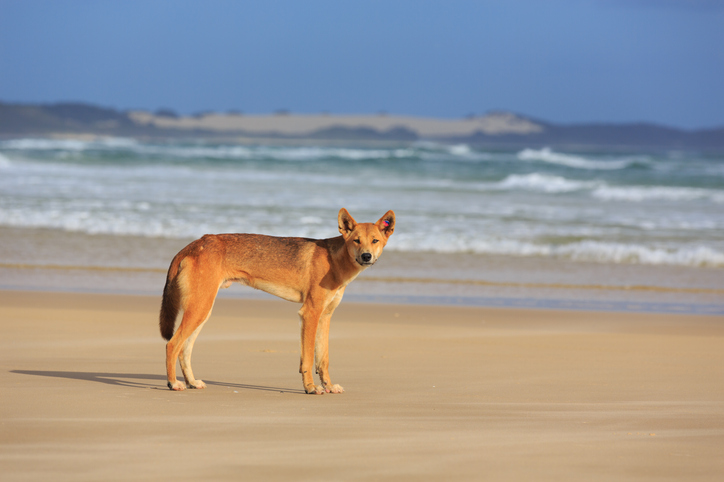The genetic diversity of modern-day dingo populations was in place long before domestic dogs were introduced into Australia by European colonists, according to analysis of ancient dingo DNA.
A new study, co-led by Queensland University of Technology (QUT) and the University of Adelaide, and involving researchers from the Australian National University (ANU), suggests dingoes and modern dogs interbred less than thought; modern-day dingoes retain much of their ancestral genetic diversity.
All dingoes on K’gari (Fraser Island) have no domestic dog ancestry, proving they are pure dingo.
Dingoes arrived in Australia more than 3,000 years ago, most likely transported by seafaring people.
Co-lead author Dr Sally Wasef, from QUT’s School of Biomedical Sciences, said the findings provide a “rare glimpse” into the pre-colonial genetic landscape of dingoes, free from any mixing with modern dog breeds.
“The samples we analysed represent the oldest ancient DNA recovered in Australia and indicate broad possibilities of future DNA and conservation work that could be carried out on dingoes and other animals,” Dr Wasef said.
“Dingo populations are classified into east and west groups, which were previously thought to have formed during post-colonial human activity.
“Our findings show, however, that dingoes’ population structure was already in place thousands of years ago and clarify the genetic heritage of dingoes, while highlighting the importance of using ancient DNA for wildlife conservation.”
The research team compared ancient DNA entombed in 42 dingo fossils up to 2,746 years old with the DNA from modern dingo populations across Australia, as well as ancient and modern dogs around the world.
ANU researchers, including Dr Loukas Koungoulos, helped identify and date ancient dingo bones used for the DNA study.
They analysed dingo fossils from the Curracurrang Rockshelter, an ancient Aboriginal site in New South Wales.
“Our earlier research suggested the Curracurrang dingoes, who lived between 700 to 2,300 years ago, were living with Aboriginal people as tamed or domesticated animals, rather than as wild animals,” Dr Koungoulos said.
“Their DNA is the first known from the Sydney area before the complicating effects of lethal control and interbreeding with European dogs which occurred from colonisation in 1788 AD. The findings provide a new standard for the genetic identity of ‘pure’ dingoes from this region.
“The evidence of ancient dingoes’ breeding with New Guinean dogs, as revealed by the Curracurrang dingo genomes, hints at contact thousands of years ago between the Indigenous peoples of Australia and Papua New Guinea – a chapter of prehistory that is otherwise highly obscure.”
Co-lead author Dr Yassine Souilmi, from the University of Adelaide, said the findings uncover crucial details about the ancestry and migration patterns of the modern-day dingo.
“Dingoes had distinct regional populations, split roughly along the Great Dividing Range, long before the European invasion of Australia, and certainly predating the dingo-proof fence,” Dr Souilmi said.
“Dingoes hold significant cultural importance to Aboriginal and Torres Strait Islander peoples … understanding their historical population structure helps us preserve the dingo’s role in Australian ecology and culture.
“Dingoes are currently under threat from lethal culling programs, and our research highlights the importance of protecting populations in national parks and beyond.”
The research is published in the Proceedings of the National Academy of Sciences.



